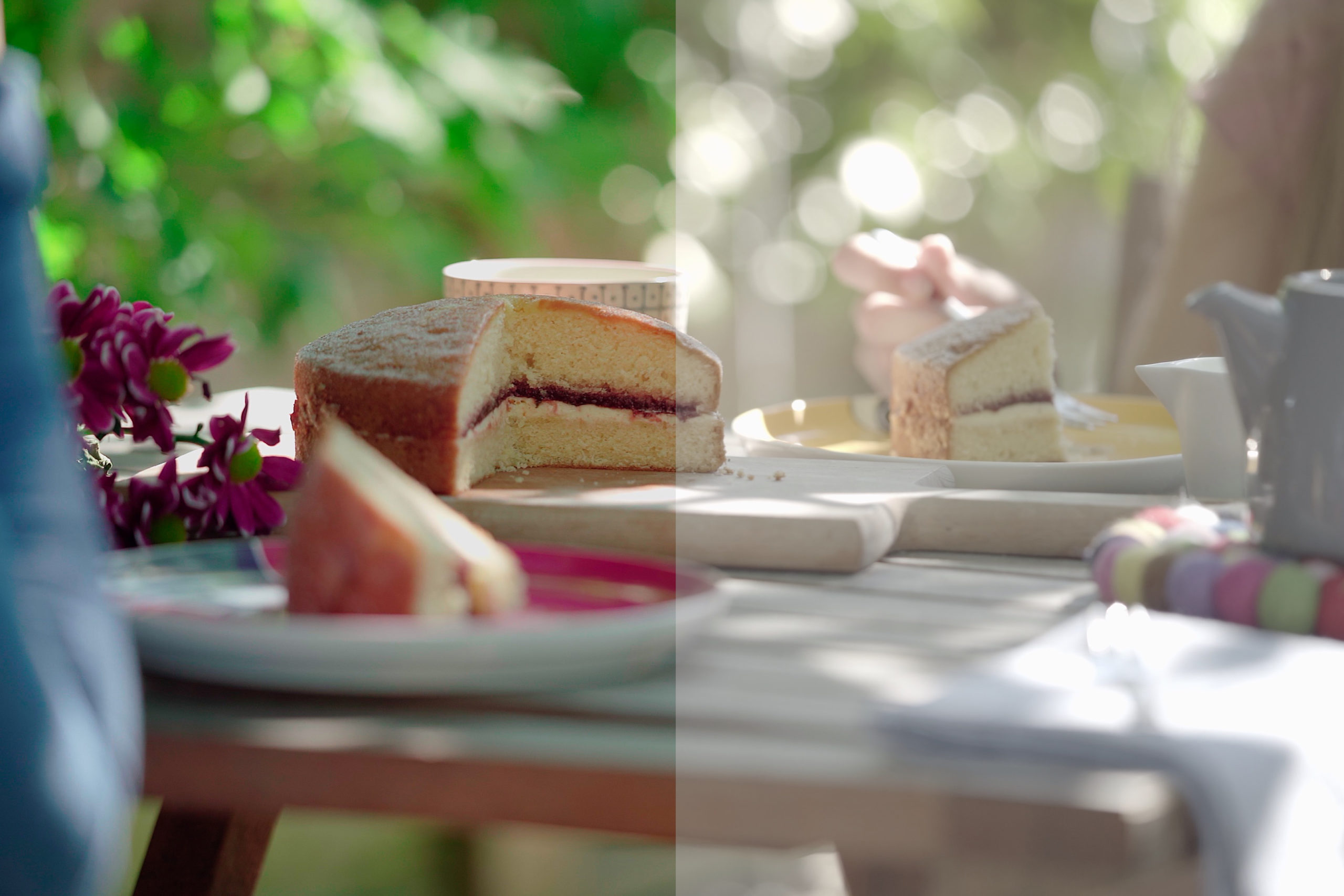What’s ‘LOG’? – A Guide

A request for unedited footage
There’s a good chance that at some point you’ll be asking your video team to deliver the unedited footage from your shoot, rather than the final edit. Afterall, you might need to pass it onto another team, archive it or want to have a little play with it yourself. However, when you open that hard drive all the vibrant images you saw in the rushes, draft edits or over someone’s shoulder on the shoot itself, won’t appear quite as expected. The footage is murky. So – what’s going on?
Why is the footage ‘grey’ and not as expected?
Firstly, it’s not a mistake by your team. Instead it’s intentional. ‘LOG’ is the name of this type of footage – ‘LOG’ being the acronym for logarithmic. It’s normal for the image to appear desaturated, grey and soft…but why?
Technical Baking – ‘Log’ Explained
The technicality of all this is long, and fairly boring so let’s use the enduring analogy of baking.
Imagine you have two teams, Team A is recording ‘normal video’ and Team B is recording in LOG.
Team A
Our ‘normal team’ orders a pre-baked cake. The cake will arrive at the door 90% finished. All the team needs to do is add some candles, maybe a name in icing and sing happy birthday. This is great! They have more time to get on with other things.
On the other hand, they can’t make any big changes. For example, they can’t rip off the icing without damaging the sponge underneath, and they can’t suddenly decide to make it gluten-free, afterall, a baked cake can not be unbaked. So, the team is committed.
team B
Next, let’s us imagine our team recording in LOG. They’ve ordered the ingredients for a cake. They’re going to have to bake it meaning it’ll take longer, however they have more control over the decisions that affect what type of cake it will become, and they can make changes to their original recipe as they go. Maybe they want a lighter sponge, maybe they’re tweaking the colour of the icing, maybe they’re making a square cake instead of a round one?
…enough with baking.
What’s the outcome?
In short, the team that recorded ‘normal video’, are more or less ‘baking in’ the image. In post-production, they’re restricted to the original image’s characteristics eg. contrast, colour and shadow detail. The team can make small tweaks but for the most part that’s it. The Positives? It saves time in post-production. Negatives? You’re restricted to the changes that can be made during that process…
Our team recording in LOG, on the other hand, has more flexibility in post-production. They are able to take the grey soft images and turn them in to something acceptable for viewing. The team can add contrast, regain details in shadows, sharpen and shift the colour as required. To do this they must go through what’s called a ‘grading process’. Negatives? This process takes longer than ‘normal video’. Positives? There is much more scope to make subtle and not-so subtle changes to the image. And, the more options available, the more likely your video team can deliver the specific aesthetic and style you’re after.
So, there you have it. If you ever get grey odd-looking footage, there’s no need to freak out. It’s simply LOG.
